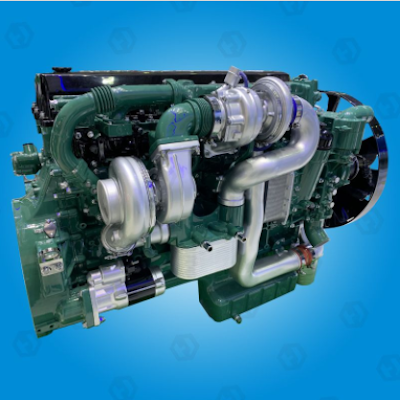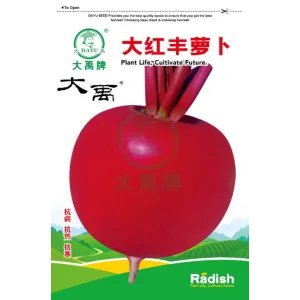Guidelines for Types and Materials of Fuel Lines
The fuel line is a safety part of every car and therefore must comply with safety regulations. There are a few considerations drivers should be aware of when selecting a reliable fuel line, with minimal verification at the component level.

Types of Fuel Lines
Rigid
●Most fuel lines that connect to the body, frame, or engine are made of seamless steel tubing. The steel spring also wraps around the pipe at certain points to prevent damage. Whenever a fuel line is replaced, use only steel tubing.
●Copper and aluminum pipes should not replace steel pipes. These materials cannot handle normal vehicle vibrations or chemically react with gasoline.
●In some vehicles, rigid fuel lines are secured with the frame from the fuel tank to a location near the fuel pump. The gap between the frame and the pump is then bridged by a short flexible hose that absorbs engine vibrations. In other vehicles, rigid lines run directly from the tank to the pump.
Flexible
●Synthetic hoses are used in most fuel systems where flexibility is required. Connections between steel fuel lines and other components of the system typically employ shorter line sections.
●The inner diameter of the oil pipe is generally larger, and the inner diameter of the oil return pipe is smaller. The material of the vapor line must be resistant to attack by fuel vapors.
●Metal or plastic restrictors are mainly used in exhaust pipes to control steam flow rate. They are located at the end of the exhaust pipe or the steam exhaust hose itself. When used for a hose rather than an exhaust, the restrictor needs to be removed from the old hose and installed on the new hose every time the hose is changed.
Fuel Pipe Material
Typically, fuel line hoses are made of the following materials:
Steel
Many front-wheel-drive and rare-wheel-drive vehicles with fuel tanks have, on rare occasions, rigid fuel lines that run along the length of the chassis from the fuel tank to the engine bay. These pipes are cheap and strong, but can cause fuel leaks.
Rubber
Some vehicles have a rubber fuel hose that connects the fuel line on the chassis to the fuel pump or carburetor on the engine. Rubber hoses are flexible and can be cut to length as needed, but they will wear out over time and rub if not properly secured.
Copper
In older models, the fuel line hoses were equipped with copper material. The advantage of using copper hoses is that they are easy to install and service, but they are bulky and expensive compared to other materials.
Plastic
Modern types of vehicles often use fuel lines made of plastic, usually nylon. Plastic fuel pipes do not rust and are lighter than metal pipes, but they melt at low temperatures and are not easy to repair.
Installation and Accessories
Install
●The fuel supply line from the tank to the carburetor is rounded to follow along the frame on the underside of the car.
●Steam and return lines are usually located on the frame rails opposite the supply lines, but may also be routed with the fuel supply lines. All rigidity is attached to the frame rails or underbody with screws and clips or clips. Typically, clamps are used to secure the hose to the steel fuel line.
In Conclusion
The fuel line is a safety part of every car and therefore must comply with safety regulations. There are a few considerations drivers should be aware of when selecting a reliable fuel line, with minimal verification at the component level. You are welcome to contact RUOXUN for more information.

Types of Fuel Lines
Rigid
●Most fuel lines that connect to the body, frame, or engine are made of seamless steel tubing. The steel spring also wraps around the pipe at certain points to prevent damage. Whenever a fuel line is replaced, use only steel tubing.
●Copper and aluminum pipes should not replace steel pipes. These materials cannot handle normal vehicle vibrations or chemically react with gasoline.
●In some vehicles, rigid fuel lines are secured with the frame from the fuel tank to a location near the fuel pump. The gap between the frame and the pump is then bridged by a short flexible hose that absorbs engine vibrations. In other vehicles, rigid lines run directly from the tank to the pump.
Flexible
●Synthetic hoses are used in most fuel systems where flexibility is required. Connections between steel fuel lines and other components of the system typically employ shorter line sections.
●The inner diameter of the oil pipe is generally larger, and the inner diameter of the oil return pipe is smaller. The material of the vapor line must be resistant to attack by fuel vapors.
●Metal or plastic restrictors are mainly used in exhaust pipes to control steam flow rate. They are located at the end of the exhaust pipe or the steam exhaust hose itself. When used for a hose rather than an exhaust, the restrictor needs to be removed from the old hose and installed on the new hose every time the hose is changed.
Fuel Pipe Material
Typically, fuel line hoses are made of the following materials:
Steel
Many front-wheel-drive and rare-wheel-drive vehicles with fuel tanks have, on rare occasions, rigid fuel lines that run along the length of the chassis from the fuel tank to the engine bay. These pipes are cheap and strong, but can cause fuel leaks.
Rubber
Some vehicles have a rubber fuel hose that connects the fuel line on the chassis to the fuel pump or carburetor on the engine. Rubber hoses are flexible and can be cut to length as needed, but they will wear out over time and rub if not properly secured.
Copper
In older models, the fuel line hoses were equipped with copper material. The advantage of using copper hoses is that they are easy to install and service, but they are bulky and expensive compared to other materials.
Plastic
Modern types of vehicles often use fuel lines made of plastic, usually nylon. Plastic fuel pipes do not rust and are lighter than metal pipes, but they melt at low temperatures and are not easy to repair.
Installation and Accessories
Install
●The fuel supply line from the tank to the carburetor is rounded to follow along the frame on the underside of the car.
●Steam and return lines are usually located on the frame rails opposite the supply lines, but may also be routed with the fuel supply lines. All rigidity is attached to the frame rails or underbody with screws and clips or clips. Typically, clamps are used to secure the hose to the steel fuel line.
In Conclusion
The fuel line is a safety part of every car and therefore must comply with safety regulations. There are a few considerations drivers should be aware of when selecting a reliable fuel line, with minimal verification at the component level. You are welcome to contact RUOXUN for more information.



评论
发表评论